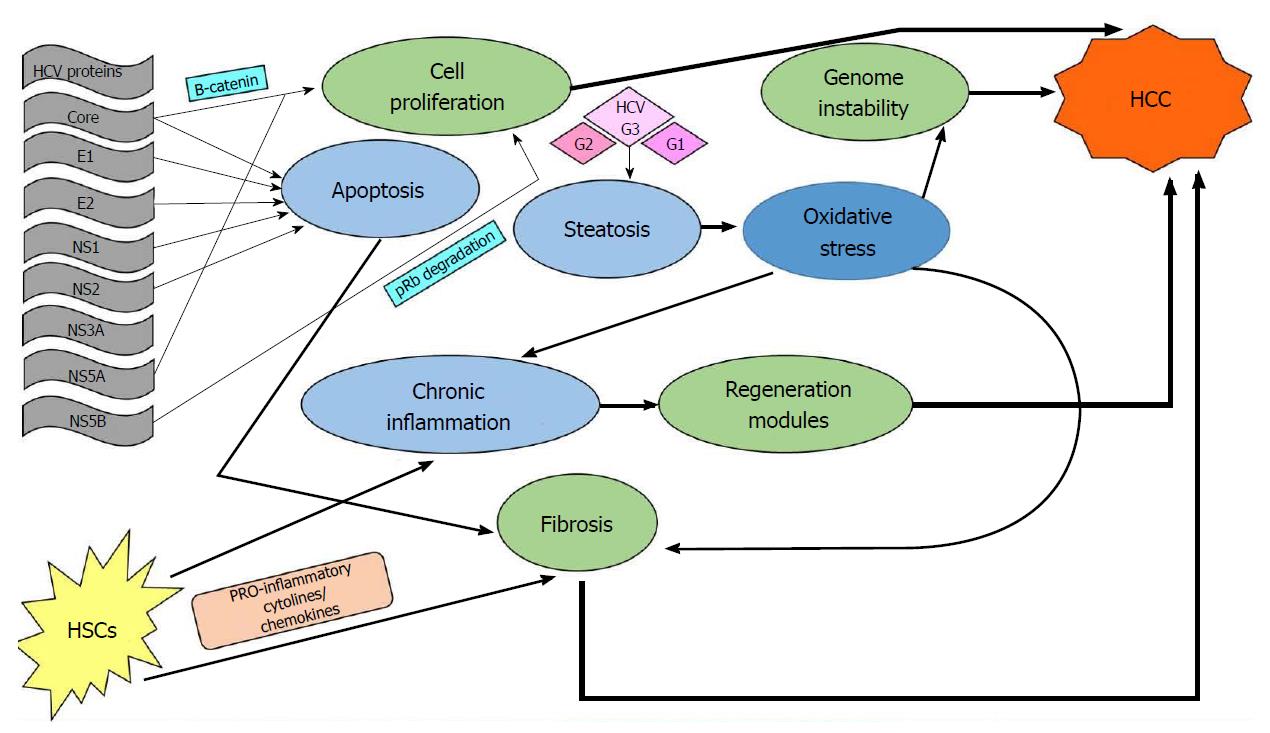Copyright
©The Author(s) 2018.
World J Hepatol. Sep 27, 2018; 10(9): 595-602
Published online Sep 27, 2018. doi: 10.4254/wjh.v10.i9.595
Published online Sep 27, 2018. doi: 10.4254/wjh.v10.i9.595
Figure 1 Current (March 2018) common direct antiviral agent regimes used in hepatitis C virus infection according to their target molecules in the hepatitis C virus genome.
Figure 2 Schematic illustrations of identified pathways in hepatitis C virus-induced liver carcinogenesis.
Viral DNA components promote host cell apoptosis deregulation, while certain viral proteins trigger proliferation signaling in the hepatic cell: Core and NS5A through the β-catenin pathway and NS5B by triggering tumor suppressor protein (pRb) degradation. Core, E1, E2, NS1 and NS2 proteins induce apoptosis, forcing a regeneration process, thereby promoting fibrosis. Oxidative stress due to inflammation also facilitates host cell genome instability and fibrosis. Inflammation activates hepatic stellate cells (HSCs) that in response secrete cytokines and chemokines, further promoting the inflammation, damage and regeneration cycle. HSCs also play a crucial role in fibrosis progression, as under chronic activation they switch their phenotype to matrix-secreting fibroblasts. Additionally, hepatitis C virus genotype 3 (as well as genotypes 1 and 2) induces steatosis, which further extends the oxidative stress, leading to earlier fibrosis. HCC: Hepatocellular carcinoma; HSCs: Hepatic stellate cells; HCV: Hepatitis C virus.
- Citation: Gigi E, Lagopoulos VI, Bekiari E. Hepatocellular carcinoma occurrence in DAA-treated hepatitis C virus patients: Correlated or incidental? A brief review. World J Hepatol 2018; 10(9): 595-602
- URL: https://www.wjgnet.com/1948-5182/full/v10/i9/595.htm
- DOI: https://dx.doi.org/10.4254/wjh.v10.i9.595










